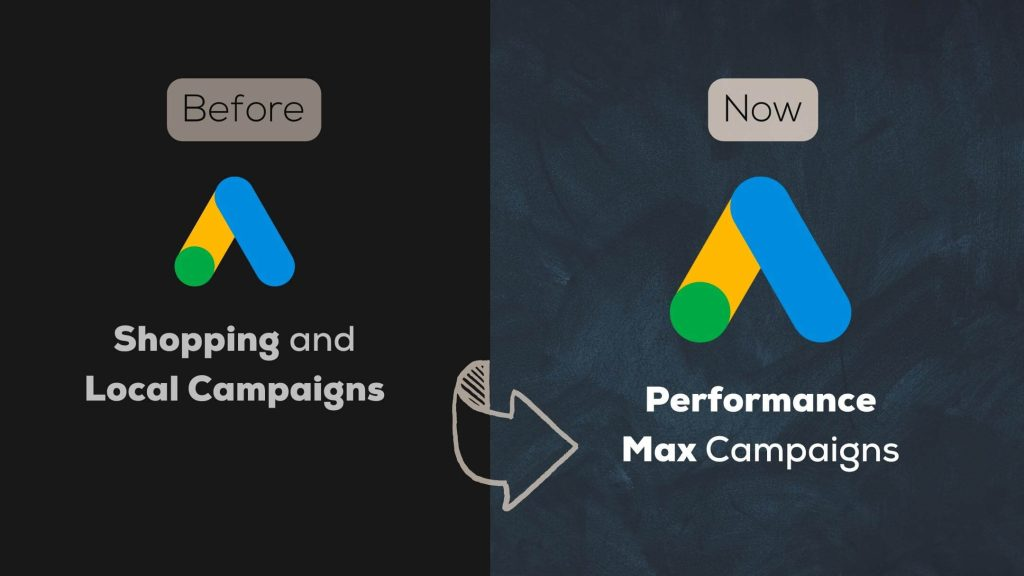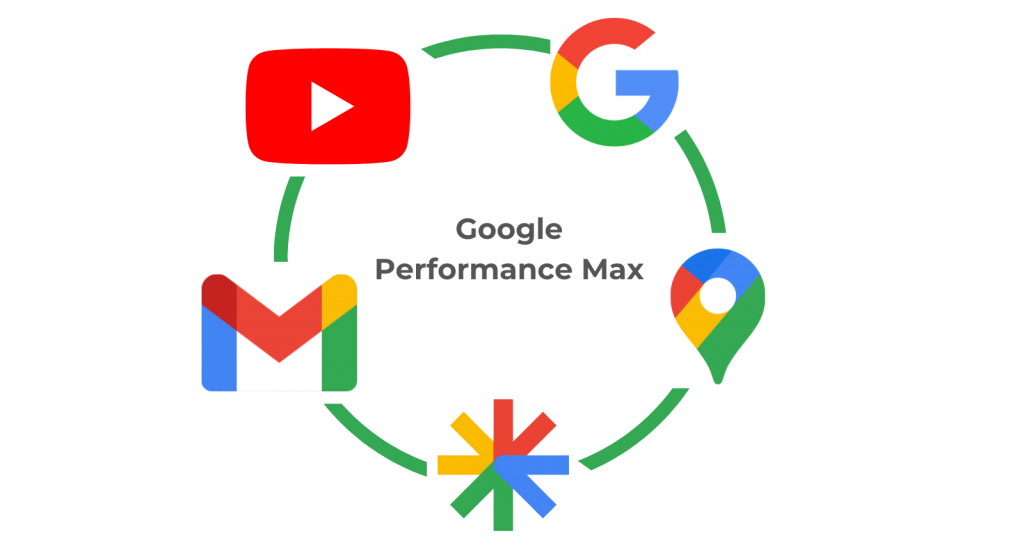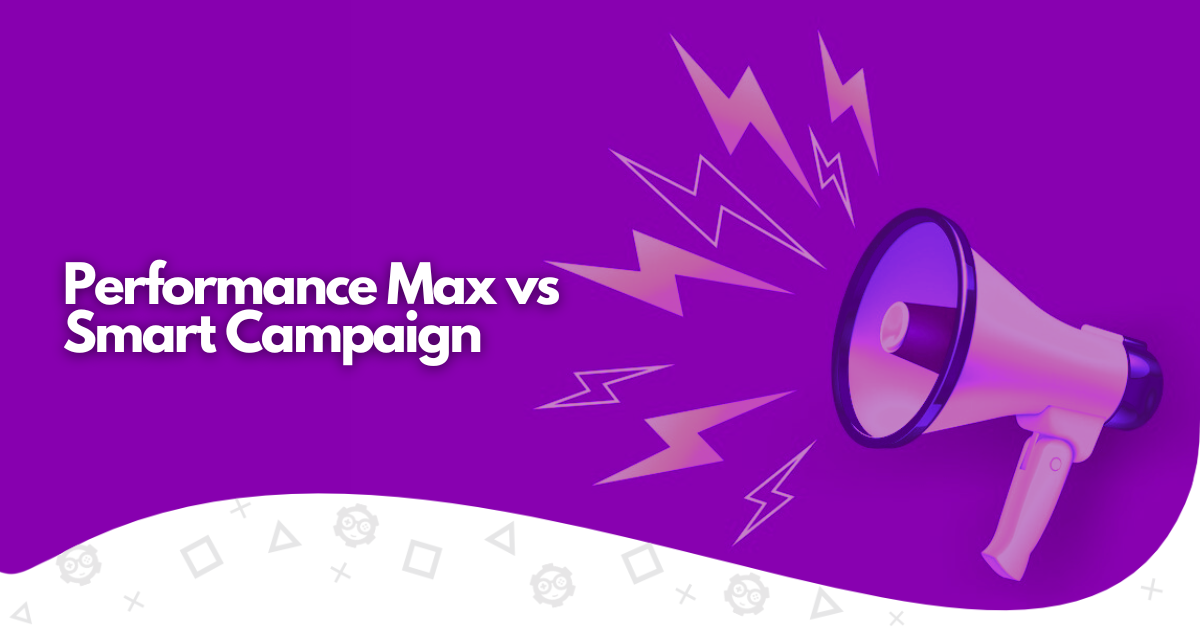In the dynamic digital advertising landscape, the retirement of smart shopping campaigns marked a significant shift in Google Ads’ strategy. With the introduction of Performance Max (PMAX) campaigns, advertisers witnessed a paradigmatic transformation in campaign management and optimization.
As we navigate this evolution, it’s imperative to understand the features and benefits of PMAX campaigns and the context of their emergence, including the replacement of Smart Shopping. Join us as we explore the transition from Smart Shopping to Performance Max, uncovering the nuances of ad groups, local campaigns, and standard shopping campaigns.
What Were Smart Campaigns?
Smart Shopping Ads, including Google Smart Shopping Campaigns, were designed to simplify ad creation and management. They allowed advertisers to showcase their products across Google’s network, including the Google Search results page, Google Display Network, YouTube, and Gmail. Leveraging machine learning algorithms, Smart Campaigns optimized bidding strategies to maximize conversion value while minimizing costs.
Advertisers only needed to set their campaign objectives and budget. Additionally, Smart Campaigns incorporated remarketing strategies by retargeting users who had previously engaged with their products or websites. Smart Campaigns were a powerful tool that combined automation, remarketing, and broad reach to help advertisers achieve their goals. However, with their discontinuation in 2022, the more advanced Performance Max replaced Smart Campaigns completely, offering additional inventory and formats for reaching new customers.
What is Google Performance Max Campaign?
Performance Max (PMAX) builds upon the foundation laid by Smart Campaigns while introducing several enhancements. PMAX campaigns are designed to boost performance based on specific conversion goals set by advertisers. Real-time optimization across all channels ensures maximum conversions and value. If you want to know in detail what is Performance Max, check out our article.
Leveraging Google’s AI, PMAX unifies efforts across various channels, allowing advertisers to reach their audience seamlessly. Unlike its predecessor, Smart Campaigns, PMAX provides access to all Google Ads inventory from a single campaign. Advertisers can tap into a broader range of formats and placements. Performance Max campaigns empower advertisers with efficiency and effectiveness, maximizing ad efficiency and campaign performance.
Differences and Similarities Between Performance Max and Smart Campaigns

Performance Max and Smart Campaigns are two types of Google Ads campaigns that use automation and machine learning to optimize your advertising goals. You should know some similarities and differences before choosing one for your business. Here is a brief overview:
Similarities
- Both Performance Max and Smart Campaigns allow you to set a target return on ad spend (ROAS), which measures how much revenue you generate for each dollar spent on ads.
- Performance Max and Smart Campaigns use Google’s machine learning algorithms to adjust your bids automatically based on your target ROAS and other factors.
- Performance Max and Smart Campaigns use your Google Merchant Center feeds to create and display Shopping ads.
Differences
- Performance Max is a newer, more advanced campaign type that runs ads across all Google platforms, including Search, Display, YouTube, Gmail, and Discovery. It also lets you upload customer data and use different asset groups and media formats to create more engaging and personalized ads.
- Smart Campaigns were more straightforward and more limited campaign types that ran ads mainly on Google Search and the Google Display network. They do not offer the same customization and flexibility as Performance Max.
- Performance Max is designed for performance-based campaigns that aim to maximize conversions and sales.
You can also check our in-depth analysis of Smart Shopping upgrade to Performance Max.
The Pros and Cons of Google Performance Max Campaigns

After replacing the old Smart Shopping in 2022, the new Performance Max Campaigns offered robust features and automation, revolutionizing add optimization across channels. Let’s explore some key aspects, weighing their pros and cons.
Pros
Broad Reach: Performance Max campaigns allow advertisers to reach audiences across the entire Google Network, including Search, Display, YouTube, Gmail, Maps, and Discover. This broad reach increases ads’ visibility and expands the campaigns’ potential reach.
Automated Optimization: Performance Max campaigns leverage Google’s advanced AI algorithms to optimize bidding strategies, ad placements, and targeting automatically. This automation streamlines campaign management and frees up time for advertisers to focus on strategic initiatives.
Unified Campaign Management: With Performance Max, advertisers can manage multiple ad formats and placements from a single campaign. This unified approach simplifies campaign management and ensures consistent messaging across different channels.
Access to Audience Signals: Performance Max campaigns enable advertisers to effectively utilize audience signals to optimize targeting and reach specific audience segments. This feature enhances ad relevance and improves campaign performance.
Goal-Based Optimization: Performance Max campaigns allow advertisers to set specific marketing objectives and goals, such as maximizing conversions, increasing website traffic, or improving return on ad spend (ROAS). The campaign optimization is aligned with these goals to drive better results.
Cons
Limited Customization: Performance Max campaigns offer limited customization options compared to other campaign types. Advertisers have less control over campaign settings, such as bid strategy, ad placement, and targeting, which may not align with specific campaign requirements.
Complexity for Beginners: Performance Max campaigns may be more complex for beginners or advertisers unfamiliar with Google Ads. The automated optimization and lack of manual control require a deeper understanding of campaign management principles to achieve optimal results.
Dependency on Google’s AI: Performance Max campaigns heavily rely on Google’s AI algorithms for optimization. While this automation can streamline campaign management, advertisers have limited visibility and control over the optimization process, which may lead to uncertainty or trust issues.
Learning Curve: Advertisers transitioning from other campaign types, such as Smart Shopping campaigns, may face a learning curve when adapting to Performance Max. Understanding the nuances of asset groups, audience signals, and automated bidding strategies requires time and experience.
While Performance Max offers several benefits, including broad reach, automated optimization, and goal-based optimization, they also come with limitations such as limited customization, complexity for beginners, and dependency on Google’s AI. Advertisers should carefully weigh the pros and cons to determine if Performance Max fits their advertising objectives and requirements. Check one of our articles if you’re interested in Performance Max vs Smart campaign comparison.
Best Practices in Google Performance Max Ads

To unlock the full potential of Performance Max campaigns, it’s crucial to follow the best practices that optimize performance and drive results. Let’s explore the essential best practices for maximizing the effectiveness of Performance Max campaigns, empowering advertisers to achieve their marketing objectives efficiently.
Strategic Asset and Audience Management
Asset Groups: Organize your asset groups strategically within your Google Ads account to cover various creatives, including text ads, images, videos, and links. The importance of Google Ads videos in Performance Max is invaluable. This diversity maximizes the appeal of your ads across different channels and placements within the Google Network.
Audience Signals: Leverage audience signals to refine your targeting and optimize ad delivery. Utilize data from Google Audiences, website visitor lists, app user lists, customer lists, and video viewer lists to enhance audience segmentation and increase ad relevance.
High-Quality Assets: Performance Max campaigns thrive on diverse creative assets, including high-quality images, videos, and texts. Ensure your assets are engaging, brand-aligned, and optimized for various formats. Google uses these assets to automatically generate content tailored to different audiences and contexts, so the richer your asset library, the better your ads will perform.
Data-Driven Optimization and Decision Making
Testing and Optimization: Implement a rigorous testing framework for continuous optimization. Base your campaign decisions on data insights from performance statistics, historical data, and audience behavior. Regularly optimize your Performance Max campaigns based on these insights.
Data-Driven Decisions: Base your campaign optimizations on data insights from performance statistics, historical data, and audience behavior. Use this information to refine your targeting, adjust bids, and allocate budgets more effectively.
Regular Optimization: Dedicate time to optimize your Performance Max campaigns based on performance data and insights. Adjust bidding strategies, refine targeting parameters, and update ad creatives to ensure your campaigns remain effective and competitive.
Budget and Campaign Management
Budget Allocation: Allocate your budget strategically across different campaign segments to maximize overall performance. Monitor ad spending closely and reallocate resources based on the performance of each campaign element.
Clear Goals: Identify and define measurable goals that align with your overall marketing objectives. Whether increasing online sales, generating leads or driving website traffic, your campaign’s success hinges on having specific targets. Performance Max allows for multiple conversion goals, so leverage this feature to align your campaign with your business’s key outcomes.
Performance Monitoring: Continuously monitor campaign performance using Pmax reporting tools and analytics. Identify trends, anomalies, and opportunities for improvement, and adjust your strategies accordingly to maintain optimal performance.
Creative Consistency and Relevance
Ad Creative: Create compelling and relevant ad creatives tailored to your target audience. Ensure your messaging and branding are consistent across all channels and formats. For e-commerce businesses, optimize your product feed for search and ensure it is comprehensive and up-to-date.
Product Feed: For e-commerce businesses, integration with Google Merchant Center is crucial. Ensure your product feed is comprehensive, up-to-date, and optimized for search. Detailed product titles, accurate descriptions, and high-resolution images enhance your product’s visibility and appeal in shopping ads.
Cross-Channel Consistency: Performance Max campaigns can deliver ads across Google’s entire network. Ensure your messaging and branding are consistent across all channels and formats. This uniformity improves brand recognition and trust, enhancing the overall effectiveness of your advertising efforts.
By adhering to these best practices, advertisers can significantly improve the performance and outcomes of their Performance Max campaigns. Remember, the key to success with PMax lies in leveraging Google’s automation and machine learning capabilities while strategically guiding the campaign with clear goals, quality assets, and insightful data.
Automatic Upgrade to Performance Max

Google announced the automatic upgrade of Smart Shopping campaigns to Performance Max, signaling a significant shift in its advertising ecosystem. This upgrade, initiated in 2022 and continued into 2023, aiming to streamline campaign management and unlock new capabilities for advertisers.
The automatic upgrade process seamlessly transitions existing Smart Shopping campaigns to Performance Max, transferring campaign settings, objectives, budgets, and bid strategies. Advertisers are notified within their Google Ads accounts when the upgrade tool becomes available, providing them with the option to upgrade manually or allow automatic migration.
While the automatic upgrade simplifies the transition process for advertisers, reviewing and optimizing campaign settings post-upgrade is essential. Advertisers should monitor performance metrics, adjust bidding strategies, and refine targeting parameters to ensure optimal campaign performance and ROI. Overall, the automatic upgrade to Performance Max represents a strategic move by Google to empower advertisers with enhanced campaign capabilities and maximize their advertising effectiveness across the entire Google Network.
Conclusion
In conclusion, transitioning from Smart Shopping campaigns to Performance Max represents a significant shift in Google Ads’ landscape, offering advertisers advanced automation and optimization capabilities. Performance Max campaigns provide a unified approach to campaign management, allowing advertisers to reach audiences across various channels easily. Leveraging Google’s AI algorithms, Performance Max optimizes bidding strategies, ad placements, and targeting to maximize campaign performance.
However, while Performance Max offers many benefits, including broad reach and automated optimization, advertisers should consider the limitations and complexities associated with this campaign type. Limited customization options and a dependency on Google’s AI may pose challenges for some advertisers, particularly those transitioning from other campaign types.
Additionally, understanding the nuances of asset groups, audience signals, and automated bidding strategies requires time and experience. Performance Max is not just another campaign type but a significant shift in Google’s advertising approach, leveraging AI and customer data for highly targeted and efficient ad delivery. Most Smart Shopping campaigns were upgraded to Performance Max in 2022, and the remaining ones continued to be upgraded in 2023.
Ultimately, the success of Performance Max campaigns depends on advertisers’ ability to adapt their strategies, utilize campaign data effectively, and optimize performance based on past performance and campaign objectives. By leveraging Performance Max’s capabilities while considering the unique needs of their e-commerce businesses, advertisers can maximize the impact of their Google Ads campaigns and drive results across the entire Google Network.

A PPC specialist who started with organic social media. For several years, the core of his activities are:- Google Ads, Microsoft Ads, Meta Ads, TikTok Ads, Twitter Ads, Linkedin Ads. He has led campaigns with a global reach, e.g. for FootballTeam, G2A, ETOTO, as well as many smaller campaigns in the sports, construction and financial industries. Has full focus on ROAS. Privately, a fan of football, history of wars and Star Wars.

